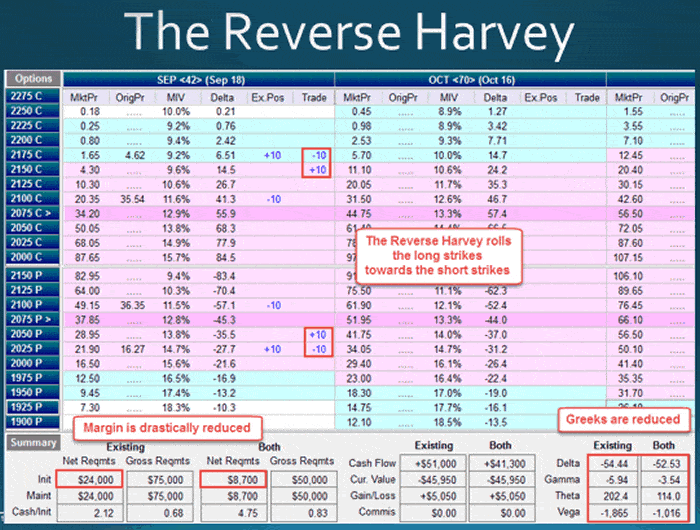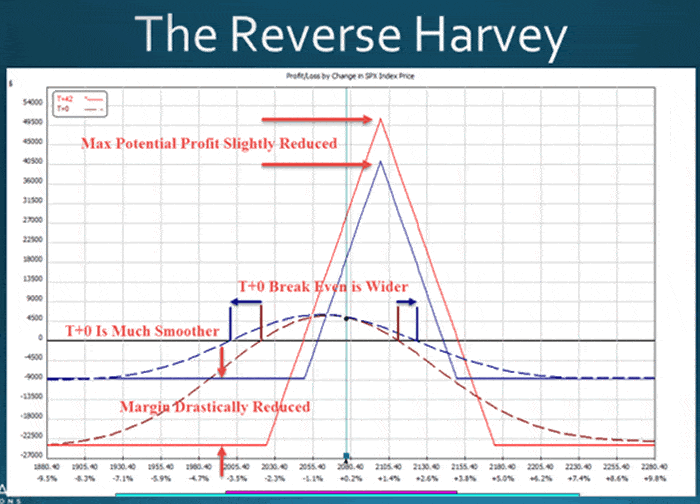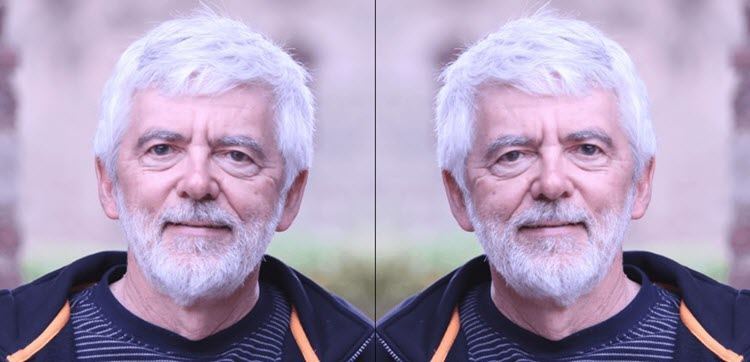Dan Harvey is a well known options trader who specialized in Iron Condor trading for many years. Dan had an article published about him in SFO magazine in 2008. Over time, Dan noticed several problems with Iron Condors so he modified them to address their shortcomings. The new version was a weird looking Iron Condor so Dan called it a Weirdor.
Dan is a great trader and doesn't stick to one type of trade. Dan also likes to trade butterfly spreads. Butterflies collect a lot of time premium and can be adjusted many ways. As Dan traded his butterfly positions, he would eventually have a profitable position and wanted to protect this profit. This is important because doing nothing with a profitable butterfly has risks:
- It becomes more sensitive to large price changes
- Gamma increases exponentially over time
- Delta is less reliable due to Gamma
The T+0 profit/loss line (today) progressively gets less flat over time as you can see:

What Happens to a Butterfly As It Makes Money?
The wings are losing value quickly. The more value they lose, the less they are hedging the position. The wings provide positive gamma to keep the T+0 flat by offsetting the negative gamma from the short options in the center of the butterfly. This causes the T+0 line to become progressively more curved.
The Story
Dan Harvey was talking to Mark Sebastian (now at optionpit.com) one day. Dan showed Mark how he was buying back the short center options and selling options farther from the center to create an iron condor shaped trade. This had the effect of flattening his T+0 line since there was less negative gamma. Here's what a typical adjustment would look like:

This adjustment has several benefits:
- Margin is reduced
- Option Greeks are reduced
- The T+0 line is smoothed, which also widens the break even prices
Mark Sebastian liked the adjustment, but he doesn't like buying expensive options back, so he proposed doing the reverse of what Dan was doing. Instead of rolling the short center options out, roll the long wings in. This is the reverse of what Dan Harvey was doing so Mark called it a “Reverse Harvey” and the name has stuck every since.
What Is A Reverse Harvey?
It is simply a technique of rolling long wings in closer to the money. Here is an example:


What Happened?
- The margin was reduced over 50%
- The option Greeks are reduced
- The T+0 line is flattened and smoothed, widening the expiration break even prices
- Most of the profit potential is retained
- DOWNSIDE: Theta is temporarily reduced
Can You Use a Reverse Harvey In Other Trades?
Of course! Just about any spread can use this idea of rolling long wings in to cut margin, flatten the T+0 line and widen your break even prices. This includes butterflies, iron condors, weirdors/jeeps, vertical spreads and more.
Summary
The Reverse Harvey is a standard adjustment technique all option traders should be familiar with. It's easy to do and has many benefits.
Have you used the Reverse Harvey technique? Tell us how you like the technique in the comments below.



Not much use in Indian markets
This is an options trading strategy. If Indian markets have options traded, then this should be a useful technique.
100% used in Indian market
Really interesting! I trade Iron Butterflies often and I never adjusted like this before. This is great! My adjustments were just defending the position. This is protecting profits that you already made and reducing risk. And the latter is the name of the game in my opinion.
I am trading options (rather profitable) since 2013, before I was daytrading FX and Futs. Reducing risk and protecting profits… that is why we last in the markets! Thank you Tom and Dan.
Regards from Holland,
Peter